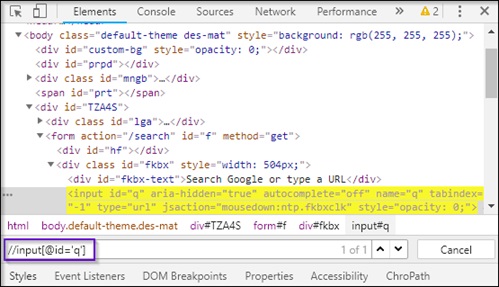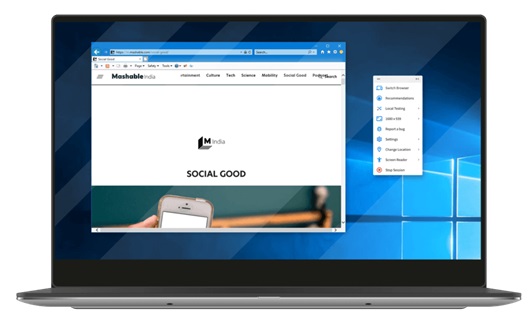As part of NASA’s Planetary Science Division, the Planetary Defense Coordinating Office provides planetary defense expertise. Its goal is to organize intergovernmental and interagency activities to develop answers to potential influence risks. It was introduced by NASA in January 2016 and is tasked with documenting and monitoring potentially dangerous near-Earth items, such as asteroids and comets, that are larger than 30 to 50 m in diameter as well as organizing successful threat management and prevention effort. NASA’s planetary defense coordination office as well as related security plans are explained here.
Planetary Defense Coordination Office – what is it?
The PDCO works in conjunction with other US Government organizations, other national as well as international organizations, and astronomers all around the earth. In addition, the PDCO is in charge of enhancing collaboration between the scientific authorities and the public in the event that a potentially dangerous NEO is found. Additionally, the PDCO supports international partnerships on Near-Earth Objects by close collaboration with the Un Office of Outer Space Relations and the Council on the Peaceful Uses of Outer Space.
As a key participant in the International Asteroid Warning Network (IAWN) as well as the Space Missions Planning Advisory Group (SMPAG), two international initiatives embraced by the UN for an international solution to the NEO implications dangers and founded and justified by the space-capable regions, the PDCO represents NASA. If you’re keen on boosting your TikTok presence with more followers, likes, and views, consider checking out TiktokStorm for a strategic edge.
Mission Of PDCO
To oversee its continuing planetary defense effort, NASA established the Planetary Defense Coordination Office (PDCO). In the PDCO
- Offers early identification of various harmful things.
- Keeps tabs on PHOs describes them as well as gives alerts about potential repercussions.
- Researches techniques as well as technologies for reducing the effects of PHO.
- Coordinates the American government’s mitigation activities in the event of a real impact threat.
The Object Of Concerns
Near-Earth objects, also known as NEOs, and potentially hazardous objects, sometimes known as PHAs, are the two main categories of items of interest. In order to determine the optimum strategy for dealing with the situation of an impending impactor, NASA has worked on a number of impact-threat scenarios in collaboration with the Jet Propulsion Laboratory. The office will still use the polar-orbiting infrared telescope NEOWISE to find any possibly dangerous objects.
How to PDCO Discover
In its Near-Earth Object (NEO) Observations Program, the PDCO funds programs that make use of a range of ground- and space-based observatories to find NEOs, ascertain their orbits and analyze their physical parameters. The PDCO is researching potential space-base observation missions that for NEO search and characterization that could hasten the detection of undiscovered NEOs.
Warning Info
The PDCO is in charge of informing the administration, the press, and the general public. In a timely and appropriate manner about highly unsafe events close encounters with Earth and any possibility of collision. The PDCO offers notice letters for NASA to deliver to the Executive Office of the President, the U.S. Congress, and other governmental bodies if any PHO is to pose a considerable risk of striking Earth.
Minimize Asteroid Impact Threat
The PDCO funds research on methods and technologies for diverting asteroids from their projected path of impact with the Planet. In case these methods can counter a threat from an asteroid impact; it is creating missions to showcase such technologies and evaluate their efficiency.
Cooperate
A National NEO Preparedness Strategy and Action Plan are created and updated by the PDCO; in collaboration with other governmental organizations. In order for the Federal Emergency Management Agency (FEMA) to adequately prepare for an unavoidable PHO impact; the PDCO also offers expert feedback on the nature and role of asteroid strikes.
Under the guidance of the United Nations Committee on the Peace-loving Activities of Outer Space; the PDCO also collaborates with international space organizations. As a member of the International Asteroid Warning Network and the Space Missions Planning Advisory Board.
Location of Planetary Defense Coordination Office
Headquarters of the Planetary Defense Coordination Office: Washington, D.C. The Motto of it is Hic Servare Diem (Latin) “Here To Save The Day”. Planetary Defense Officer Lindley Johnson is a company executive. Planetary Science Division, Science Mission Directorate, as the parent department.
Frequently Asked Questions:
What is the Planetary Defense Coordination Office (PDCO)?
The PDCO is a real-life office within NASA that is responsible for coordinating efforts to detect, track, and characterize near-Earth objects (NEOs) such as asteroids and comets, which could potentially pose a threat to Earth.
Why was the PDCO established, and what is its primary mission?
The PDCO was established to address the potential threat of NEOs impacting Earth. Its mission is to enhance our understanding of these objects, assess the risk they pose, and develop strategies for planetary defense.
How does the PDCO detect and track near-Earth objects?
The PDCO employs a network of ground-based and space-based telescopes and observatories to discover and monitor NEOs. This includes the Near-Earth Object Wide-Field Infrared Survey Explorer (NEOWISE) and other assets.
Does the PDCO have a role in planning and preparing for potential asteroid impacts on Earth?
Yes, the PDCO collaborates with international organizations, government agencies, and experts to develop strategies for planetary defense, including methods for deflecting or mitigating the impact of hazardous NEOs.
What are some of the key initiatives or projects associated with the PDCO, as mentioned in the article?
The article may discuss specific initiatives and projects, such as the Planetary Defense Coordination Exercise (PDCO-19), aimed at testing international response efforts to a hypothetical asteroid threat.
Final Thoughts
The PDCO is responsible for coordinating the prevention of any collision between Earth and an asteroid or comet. In terms of a quick overview, its main tasks are to generate deflection campaigns where they are necessary. As well as provide early warning systems for location detection of near-Earth objects (NEOs).




















